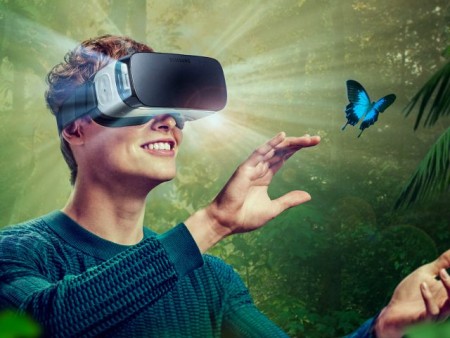April 7, 2016 – Jessica Oaks is a welcome guest blogger here at 21st Century Tech. She is a freelance journalist with a passion for technology news. Her focus is on how technology makes lives easier. You can find her musings at FreshlyTechy.com. You can also check her out on Twitter @TechyJessy. Today she writes about the 2016 state of virtual reality and where it may be headed by year end. Jessica has promised a follow up piece that looks at VR in the future including applications under development that will have significant impact in a wide variety of fields.
———-
Will 2016 be the year of Virtual Reality as many predicted of 2015? While there’s no denying this will be a banner year for virtual reality (VR) hardware and software sales, the true revolution in development is still in the offing. The tech we’re seeing now is certainly more improved and accessible to the layperson. But the real hurdle that the industry has to overcome is convincing people that immersive virtual experiences are worth having.
Tech fans are likely driving the initial high demand for Oculus Rift, which not only comes with a relatively steep price tag but also a need to upgrade to a high-end PC. Some have suggested that the eye-popping price tag on the Oculus Rift and one of its competitors, the HTC Vive, is a barrier to mass market VR adoption. There are, however, a handful of companies working to develop VR headset options not as luxe as the Oculus Rift but certainly capable of delivering much more than Google Cardboard.
Chances are that it will be the low- to mid-priced players in the VR space that drive widespread adoption of the technology and chances are also good that most people will flock toward the mobile experience. An example of this is T-Mobile’s Samsung Galaxy S7 preorders shipped with a free Gear VR headset and six games. And The New York Times recently sent its subscribers free branded Google Cardboard VR kits. It may widespread adoption won’t look like a revolution considering that more than 5 million people already are quietly using mobile VR systems to explore content already out there.
The stockpile of content options will certainly expand dramatically this year because new platforms are guaranteed to drive innovation in the game and app development space. Smart investors are likely to start backing VR applications well beyond the gaming and entertainment space. In 2016 VR won’t be a go-to tool in education, healthcare, design, and communication but it will be the year in which developers produce tools for these industries to begin to explore VR’s full potential.
And in terms of potential, think touch. Up until fairly recently VR has been a purely visual experience, making it less than immersive. That changed with the Oculus Touch and HTC’s hand-tracked controllers for the Vive. These let users not only observe virtual worlds but also interact with them. And that’s just the beginning. Start-up Tesla Studios is developing a full-body haptic suit that could be a game changer.
So think of 2016 as a VR beginning with companies like Samsung are making it an affordable tool for amusement. But there are still plenty of room for improvements in the technology and in applications.
Is 2016 the year of VR? It certainly is on the cusp but as the year unfolds we will know a lot more as new VR headsets and software tools and applications emerge. Expect a lot by the year end with lots of announcements.











